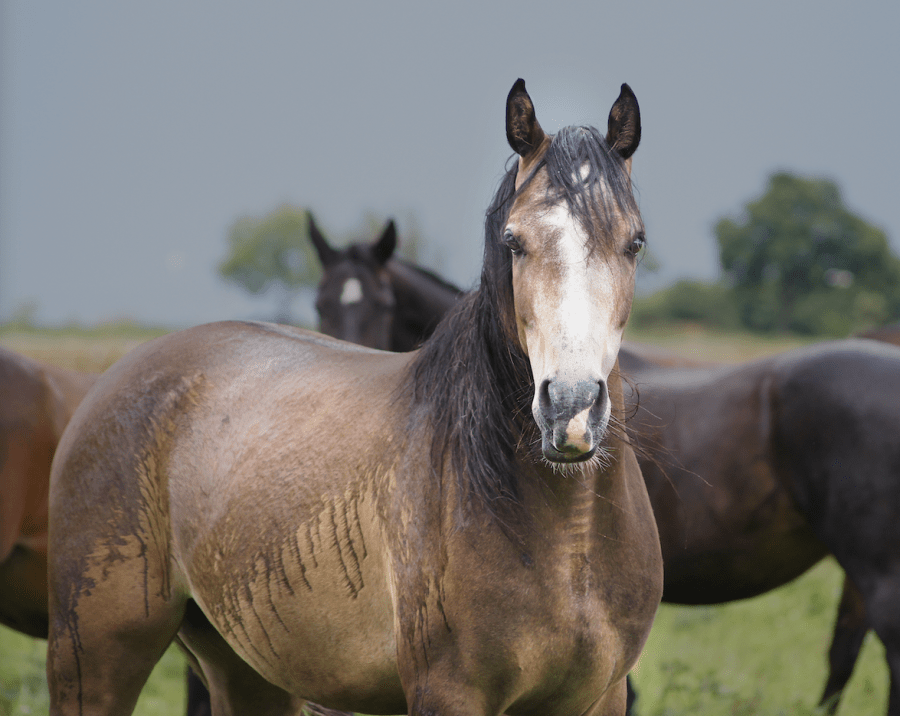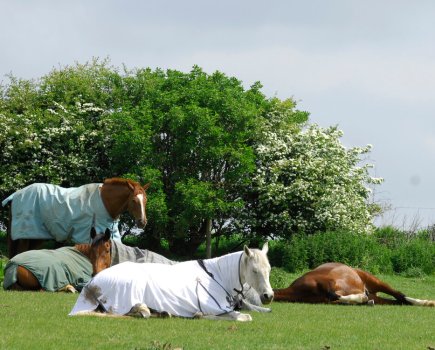Rain scald is one of the most common skin conditions in horses and is often seen after prolonged periods of rain. It’s caused by Dermatophilus congolensis, which is a bacterium that behaves both like bacteria and fungi. It causes crusty scabs and ‘paint-brush’ hair tufts that can easily be pulled off, leaving hairless, pink and raw spots that can merge into larger areas. It’s mostly seen on the top of the head, neck and back and isn’t usually itchy to the horse. It’s not a serious disease, but may lead to more severe secondary skin infections if not treated.

A flaky coat is typical with rain scald
The condition may settle down by itself when the horse is removed from wet weather conditions, with lesions disappearing and new hair beginning to regrow after about 10 days. However, removing the scabs gently, treating the affected areas with an antiseptic wash and disinfecting any equipment the horse may have come into contact with (such as rugs and saddlecloths) may speed up the healing process.
It’s advisable to not ride your horse if there are any lesions in the saddle area, as it may worsen the condition and be painful to your horse.
How to prevent rain scald
The best prevention for rain scald is to protect your horse from rain. This can be by providing shelter or by putting on a light breathable blanket when they’re turned out. Bear in mind that a heavy rug may trap moisture and worsen the condition if used unnecessarily, so avoid over-rugging even if it feels cold to you. It’s also important to keep any kit and tack that comes into contact with your horse clean and avoid sharing equipment with other horses.
If there’s no improvement in your horse’s rain scald, or it becomes worse despite you taking preventative measures, your vet may advise checking your horse for any underlying conditions that could weaken their immune system, such as Cushing’s disease.
Another trigger for rain scald can be backs that become hot and sweaty when the horse is being ridden, which are then not washed off properly after. Alternatively, they may be washed off well but the back isn’t given enough time to dry properly before a rug is put back on the horse. This trapped moisture is ideal conditions for rain scald to occur.
Treating rain scald in horses
Dermatophilus congolensis is also one of the causes of mud fever in horses. Just as the name ‘mud fever’ is misleading because the condition is not caused by mud, rain scald is also misleading because it isn’t caused by rain itself, but by moisture that becomes trapped in the horse’s coat and has no chance to escape — either because it has rained for a very long time or a rug was put on to a horse that wasn’t completely dry.
Because the bacteria lives under the rain scald scabs, it is important that these are removed before treatment is attempted. Bear in mind that this can be painful for the horse, especially if the skin underneath is sore and oozing, and so it might be necessary to soften scabs first using warm soapy water. After applying an antibacterial solution, the area should be rinsed. It is then very important to thoroughly dry the horse.
The Royal (Dick) School of Veterinary Studies at the University of Edinburgh has put together this handy factsheet about rain scald and mud fever in horses.
Main image copyright: Shutterstock. Inset: XLEquine Vet








